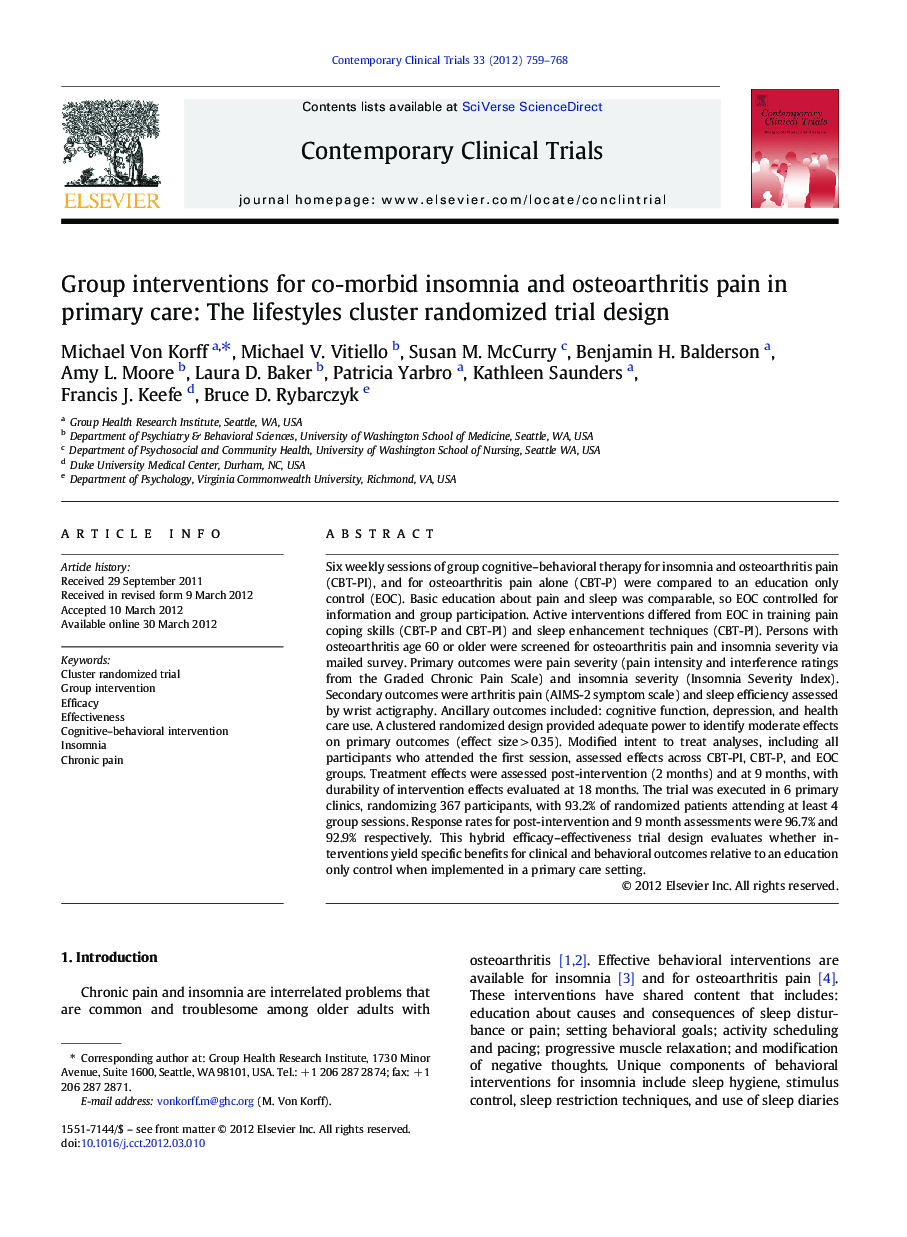| کد مقاله | کد نشریه | سال انتشار | مقاله انگلیسی | نسخه تمام متن |
|---|---|---|---|---|
| 3462911 | 1231520 | 2012 | 10 صفحه PDF | دانلود رایگان |

Six weekly sessions of group cognitive–behavioral therapy for insomnia and osteoarthritis pain (CBT-PI), and for osteoarthritis pain alone (CBT-P) were compared to an education only control (EOC). Basic education about pain and sleep was comparable, so EOC controlled for information and group participation. Active interventions differed from EOC in training pain coping skills (CBT-P and CBT-PI) and sleep enhancement techniques (CBT-PI). Persons with osteoarthritis age 60 or older were screened for osteoarthritis pain and insomnia severity via mailed survey. Primary outcomes were pain severity (pain intensity and interference ratings from the Graded Chronic Pain Scale) and insomnia severity (Insomnia Severity Index). Secondary outcomes were arthritis pain (AIMS-2 symptom scale) and sleep efficiency assessed by wrist actigraphy. Ancillary outcomes included: cognitive function, depression, and health care use. A clustered randomized design provided adequate power to identify moderate effects on primary outcomes (effect size > 0.35). Modified intent to treat analyses, including all participants who attended the first session, assessed effects across CBT-PI, CBT-P, and EOC groups. Treatment effects were assessed post-intervention (2 months) and at 9 months, with durability of intervention effects evaluated at 18 months. The trial was executed in 6 primary clinics, randomizing 367 participants, with 93.2% of randomized patients attending at least 4 group sessions. Response rates for post-intervention and 9 month assessments were 96.7% and 92.9% respectively. This hybrid efficacy–effectiveness trial design evaluates whether interventions yield specific benefits for clinical and behavioral outcomes relative to an education only control when implemented in a primary care setting.
Journal: Contemporary Clinical Trials - Volume 33, Issue 4, July 2012, Pages 759–768